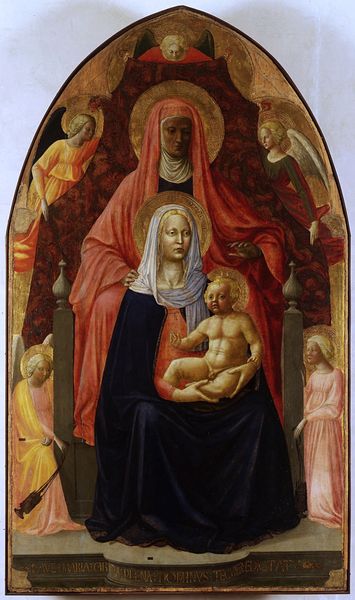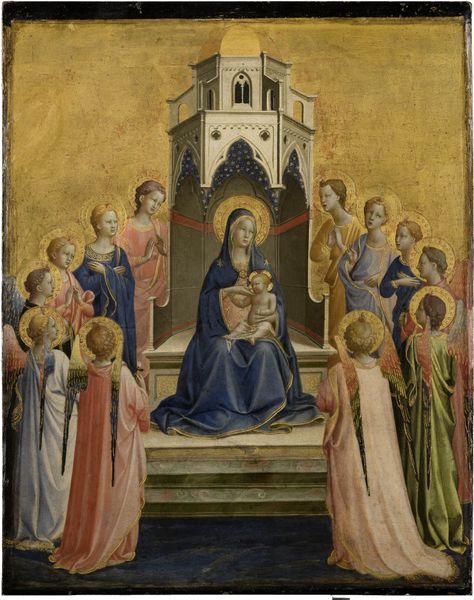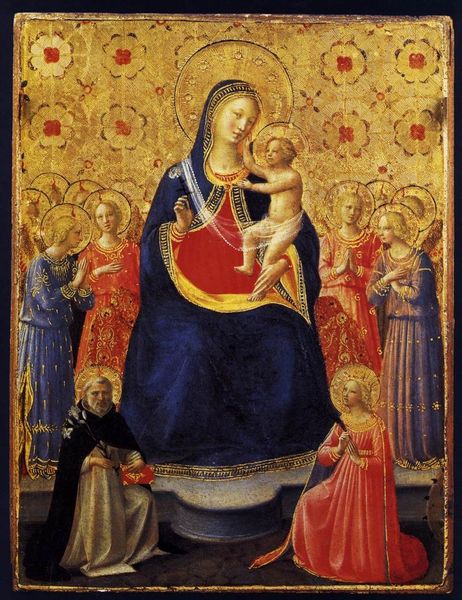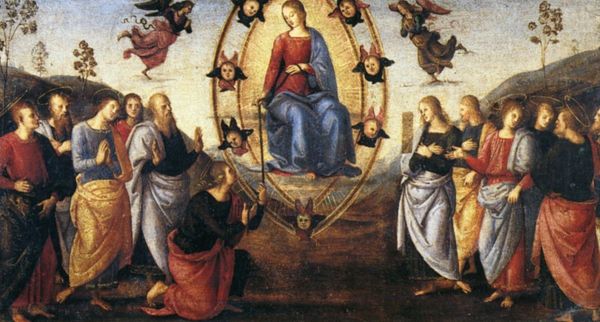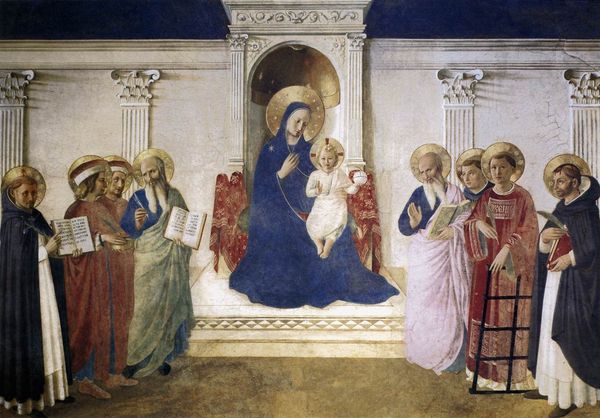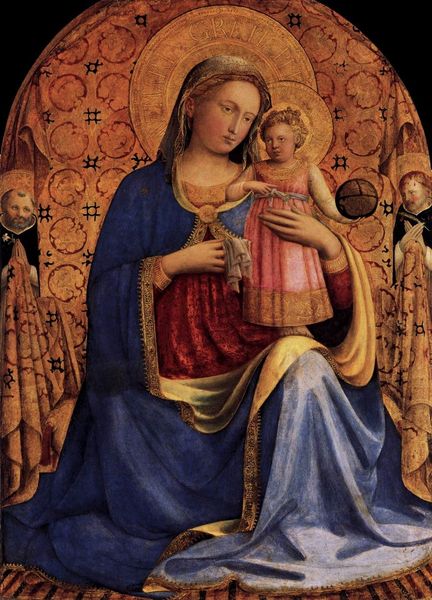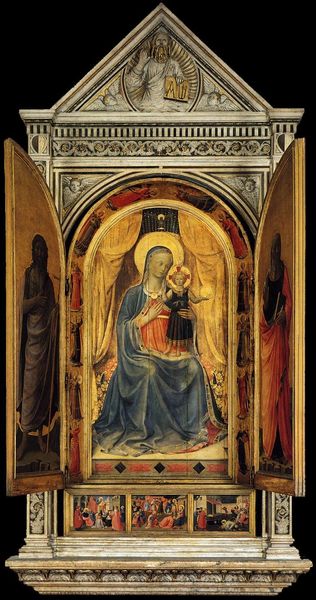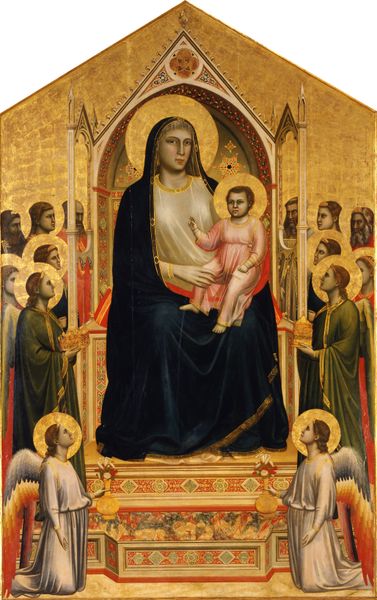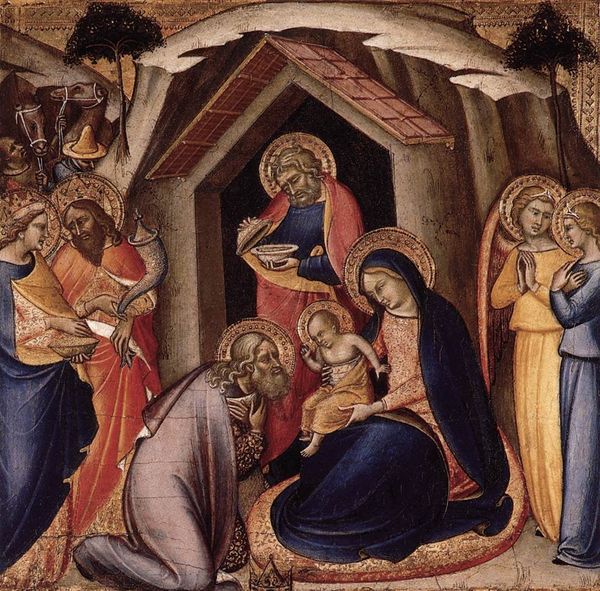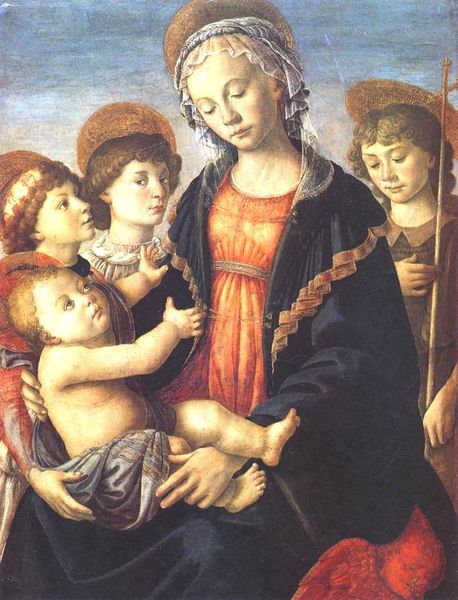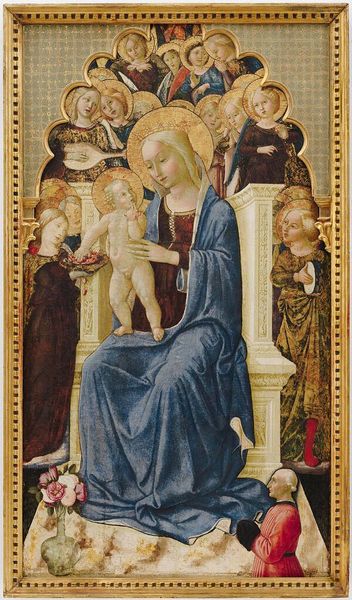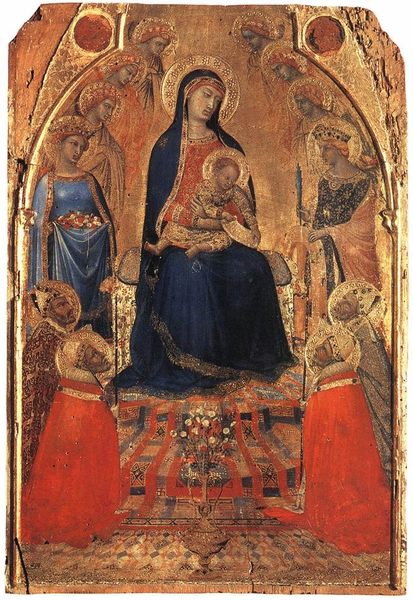
tempera, painting, oil-paint, fresco
#
portrait
#
narrative-art
#
tempera
#
painting
#
oil-paint
#
figuration
#
fresco
#
11_renaissance
#
oil painting
#
christianity
#
history-painting
#
italian-renaissance
#
early-renaissance
#
virgin-mary
#
fine art portrait
#
angel
#
christ
Dimensions: 44 x 34 cm
Copyright: Public domain
Curator: Let's consider Lippi’s "Madonna and Child Enthroned with Saints," created around 1430 using tempera, perhaps with some oil paint. Editor: The halos seem almost mechanically applied, don't they? Very uniform, a little…stamped. What do you see in terms of Lippi's choices of materials? Curator: Exactly. Notice how Lippi employs tempera to create a sense of surface clarity, almost a hard, enameled quality. Now consider the guild structure of the time. What workshops would be producing the pigments he used, and what socioeconomic factors are enabling access to specific costly colours, like ultramarine? The availability of materials significantly dictated aesthetic possibilities. Editor: So, the materials aren't just serving an aesthetic purpose, but reflecting the social structures of production? I never thought about the economics of paint. Curator: Precisely. How does Lippi's work relate to earlier paintings made with egg tempera, say from the late 1300's? Are they following familiar conventions, or do you detect innovative details arising perhaps from the application of newly accessible techniques, and material availability? Editor: It’s interesting to consider this through the lens of resources available. Now that you point it out, you can see in paintings like these an artist navigating what was technically possible given the raw ingredients that artists could obtain. The focus shifts towards production. Curator: Yes, shifting away from attributing unique artistic genius in favour of the larger network involved in art-making, including suppliers of pigments, assistants, and the demands of the patron commissioning this piece for display and use. That broader scope affects our interpretation profoundly. Editor: I'll never look at these colors the same way again! It makes you think about the relationship of artist and labour in totally new ways.
Comments
No comments
Be the first to comment and join the conversation on the ultimate creative platform.
